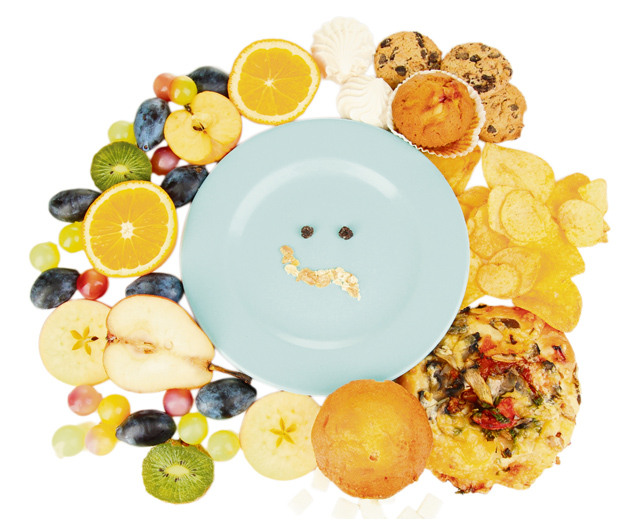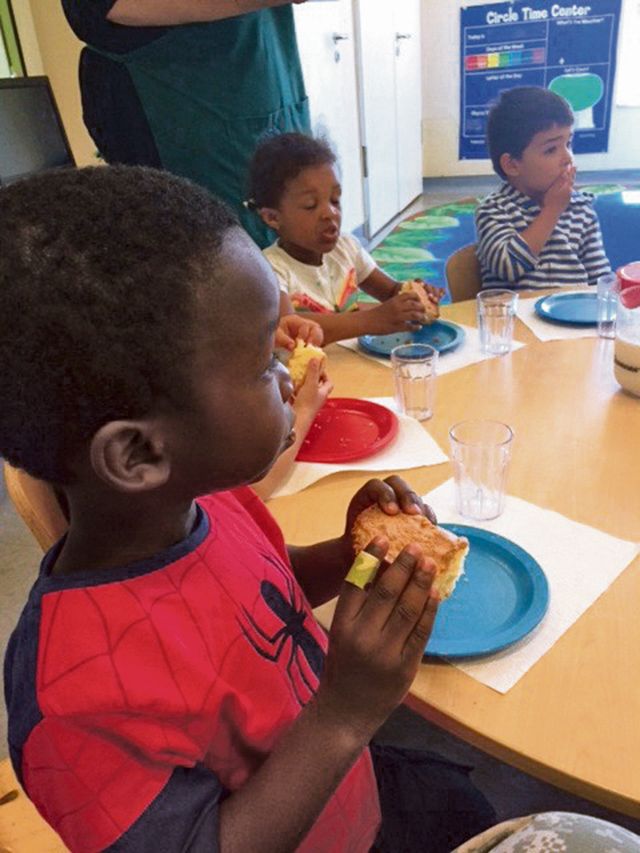
Food refusals, sensitive palates, distracted or hyperactive tendencies and dramatic reactions are commonly experienced by parents trying to establish healthy eating habits. Although most parents believe their child is a “picky eater,” in an eating culture that emphasizes abundant choices, many people can be labeled as “finicky” if scrutinized.
Grown adults shun onions, won’t touch cooked egg yolks and they pick out green vegetables on communal pizzas. It is quite common for people to prefer one type of cheese over another, or fancy one particular brand of French fry or lunch meat over others. With so many options and so many opportunities to taste different foods, developing strong eating preferences is easy.
Most parents and children battle it out over these eating habits and preferences quite publically. Unlike other routines, such as bathing, dressing or bedtime, eating routines are more public and visible to others outside the home.
Children who are hard to feed often draw more attention to themselves than children who are difficult to put to bed. It’s easy to understand, therefore this is why parents often become more stressed during dinner time than during bedtime.
Children have to eat, and parents feel as if it is their job not only to feed them, but to ensure that they eat enough and right. Parents worry about how much or how little their children eat, and this causes stress. The parent-child relationship around feeding remains one of the most challenging and humbling jobs of parenting.
Here are the four main big food fights parents and children have: noncompliance (refuses to eat what is served), complaining about what is offered, not “eating enough” and leaving the table during mealtimes.
A lot of parents worry that their child is not eating enough. Adults forget that children have smaller stomachs, and assume that their portions should be larger. It is helpful to remember that the size of a toddler’s stomach is close to the size of their fist. A dozen or so “bites” is enough for toddlers. The best advice for parents is to ask their pediatrician if a child is at a healthy weight for his or her age. Parents should strive not to worry about how much a child eats during their meal.
Most of the time, children tend to get enough of their nutritional needs over the course of a week. Parents with the least amount of difficulty feeding their children have learned to adjust their
focus away from the amount of what is eaten, and toward giving access to a wide range of healthy foods and letting children decide on what to eat from the selection given to them. Just like adults, kids tend to eat more on some days and less on others. Julie Webb-Keltepe, a Landstuhl Regional Medical Center speech and language therapist who specializes in brief treatment of children with feeding disorders, advises parents.

“When introducing new foods, repeated exposure is necessary for the food to become a preferred taste,” Webb-Keltepe said. “Try to not respond to refusal behaviors. If the child is young, you may need to degrade the texture (solid to fork mashed or fork mashed to puree) to gain initial acceptance.”
The more distressed parents become that “he’s not eating,” the more distressed a child’s eating will become. Parents should try not worry about his size or weight unless a doctor informs you that they are behind in their physical development.
In an age where the food industry markets to children quite intentionally, knowing what to feed your child can also be overwhelming. Children should be given fruits, vegetables and protein to try every day. Snacks should be eaten one hour before bed, and not offered for those who “ate their dinner.” If you are going to do night time snacks or sweets, everyone should be given access to them. If you reward eating dinner with sweets, you are fostering active dislike of the food presented at mealtime, and more intense attraction of having dessert.
The more you restrict foods, and save unhealthy foods or sweets as a bribe, the more likely the treat will be desired. Always offer dessert, or one treat a day no matter what (meaning, it is not a bribe) and you control your choices. Treats dont have to be processed — they can be fruits, jam on bread, cheese cubes, steamed colorful veggies or a even a spoonful of honey.
Children are new-food-phobic by nature. Research shows a repeated less than 10 neutral exposures within a short time frame enhance acceptance of new foods. The best thing a parent can do is to keep exposing their children to the same food over and over again. After 10 times of trying a food and not liking it, is probably safe to say that your child does not truly “like” it. Remember that talking about eating isn’t really fun, for the parent or for the child. Don’t comment or try to explain to them how to eat better; modeling is more powerful. Try not to comment
on what or how much your kids are eating. Be as neutral as possible. Remember, you’ve done your job as a parent by giving access to the food, now let them learn to eat without needing your encouragement.
Feeding children can feel like a battlefield. Here are a few tricks to prepare you better for potential “fights.”
1) Have it your way: Kids want food choices and so do you, so limit choices to two within each food category (“Do you want juice or milk?” “Peas or carrots?). Involve kids in these choices when making dinner, but make sure you don’t care about their selection: “Should
we have pasta or pizza?” Kids should help decide one item at every meal, increasing the chances on them eating something.
2) Just say no. Don’t become a short-order cook. Say “the kitchen closes at 7” and mean it. People will always prefer a meal, hand tailored to their preferences over a family style selection. If you always allow your child to eat something he prefers later after the meal or as a separate meal from the family, he won’t learn how to accommodate other foods into his palate.
3) Be a role model. If you’re constantly on a diet or have erratic eating habits, your children will grow up thinking that this sort of behavior is normal. Be honest with yourself about the kinds of food messages you’re sending. Trust your body to tell you when you’re hungry and when you’re full, and your kids will learn to do the same. Eat what’s healthy. If you don’t want your children eating something, don’t have it in the house as an option (or at least have it out of their sight).
4) Go with the flow: Children will be inconsistent. So expect a hearty appetite one day and little the next, or hate a certain food and then love it. Enjoy these surprises and don’t try to control their appetite.
5) Trick or Treat: If you are going to use food as a reward, only use it for one non-eating related behavior: potty training, after doing a chore, taking turns, getting ready for school. If you start to give kids food for more than one specific behavior, they will ask for sweets more and more.
6) Whining is going to happen: Whining peaks between age 3 and 4. It is a stage, just as learning to walk, read or going through puberty. Expect it, keep your cool and learn to ignore it. When kids whine about food, the best bet is for you to bite your tongue.
At least at some point in a family’s life feeding children will be difficult. However, as parents become more tolerant of their child’s negative reactions to the “food learning curve,” the more resilient a family’s eating habits become. Eating together is one of the most rewards parts of a family’s culture.


